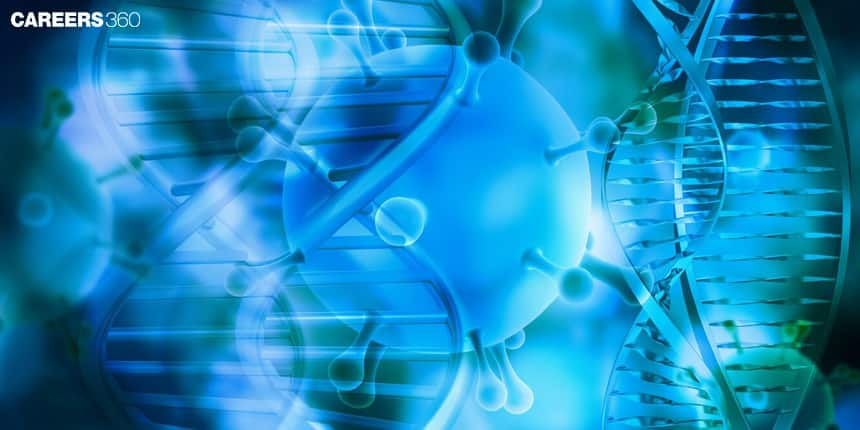Pleiotropy: Definition, Overview, Meaning, Examples, Topics
Pleiotropy is the phenomenon where a pleiotropic gene results in several, sometimes unrelated, phenotypic traits of an organism. Pleiotropy is very important in biology since it indicates the complexity of the relationship of genetic interaction, one gene affecting several aspects of the growth and functions of an organism. Pleiotropy is important for fields like genetics and medicine, as it helps in understanding the interdependence of genes and traits in the human body. This important part of the unit genetics in biology.
NEET 2025: Mock Test Series | Syllabus | High Scoring Topics | PYQs
NEET Important PYQ's Subject wise: Physics | Chemistry | Biology
New: Meet Careers360 B.Tech/NEET Experts in your City | Book your Seat now
- What is Pleiotropy?
- Gene Pleiotropy
- Examples of Pleiotropy
- Human Genetic Disorders

What is Pleiotropy?
Pleiotropy is one of the phenomena by which one gene, termed a pleiotropic gene, influences several apparently unrelated phenotypic traits. This involves higher complexity in the interaction of genes and their impacts on an organism.
It provides wider applications in understanding evolutionary biology, medicine, and genetic engineering. An example of classic pleiotropy is the gene causing sickle cell anaemia. It is somehow related to the shape of the blood cells and resistance to malaria.
Also Read
Gene Pleiotropy
Pleiotropy is the phenomenon where the pleiotropic gene affects several phenotypic traits because of the influence of the product of the gene on various biological pathways. For example, an allele of a single gene may cause widespread effects on many tissues or organs. An example of pleiotropy is the gene associated with sickle cell anaemia, which also causes effects on malaria resistance.
On the other hand, polygenic traits are influenced by several genes working together. Each gene contributes a little effect to the overall phenotype. Human height and skin colour are examples of this category. While pleiotropy emphasizes the concept of how one gene can influence multiple traits while polygenic inheritance explains how many genes work together to influence a single trait. This distinction makes clear the complexity surrounding genetic interaction and can explain how phenotypes are shaped.
Examples of Pleiotropy
These examples are:
Phenylketonuria (PKU)
Phenylketonuria (PKU) is an autosomal recessive disease which results from PAH gene mutations and hence no production of phenylalanine hydroxylase enzyme. This leads to intellectual disability, behavioural issues, eczema, and a strange smell which may work to describe how one gene mutation has the potential to cause multiple different traits.
Sickle Cell Anemia
Sickle cell anemia is associated with a defect in the HBB gene resulting in the production of red blood cells that are difficult to shape. HbS results from a single mutation and directly produces anaemia, and pain crises, is prone to infections, and organ damage and is an excellent example of pleiotrophy.
Human Genetic Disorders
Pleiotropy does manifest in a variety of human genetic disorders. A mutation in a gene here leads to multiple effects across different parts of the body. For example, FBN1 gene mutations lead to Marfan syndrome, which includes manifestations in the skeleton and the heart and even some defects in the eyes. NF1 is another disorder its loss of function of the NF1 gene has both skin and nerve tumours as well as cognitive difficulties.
These conditions explain the phenomenon of pleiotropism, where one pleiotropic gene causes multiple, often unrelated, phenotypic effects. This puts clearly into vision that genetic influences within the body can sometimes be remarkable, and that mutation of a single gene can have extensive effects on different body systems.
Also Read
Frequently Asked Questions (FAQs)
Pleiotropy is an occurrence whereby a single gene affects multiple seemingly unrelated characteristics. This means that one mutation of a gene can affect so many qualities that connote an organism’s phenotype.
One gene can influence several characteristics, which was the basis for the development of the polygenic traits theory. This is experienced because a gene might be related to lots of biological processes or functions and therefore impacts an organism’s traits in various ways.
PAH gene: The chemical change leads to Phenylketonuria (PKU) controlling mental development, skin, and smell.
HBB gene: Genetic changes are responsible for Sickle Cell Anemia which impacts the structure of the red blood cell and provokes anemia, pains and target organs’ dysfunction.
Hence pleiotropy implies that one gene has multiple effects meaning one thing can be wrong in more than one way, which makes diagnosis and management a nightmare. For instance, to treat diseases like PKU or Sickle Cell Anemia, patients need to deal with several health conditions associated with gene mutation.
Pleiotropy: Many aspects of one disease or disorder are determined by one gene (for example, the PAH gene encompasses several aspects of PKU).
Polygenic Inheritance: Polygenic genes and phentermine generic: Polygenic genes are such genes in which multiple genes are responsible for a single phenotypic trait; for example, height or skin colour is controlled by many genes.
Also Read
29 Nov'24 01:16 PM
28 Nov'24 07:59 PM
28 Nov'24 09:47 AM
25 Nov'24 04:19 PM
25 Nov'24 12:57 PM
25 Nov'24 10:59 AM
23 Nov'24 04:11 PM
21 Nov'24 03:51 PM
16 Nov'24 10:51 AM